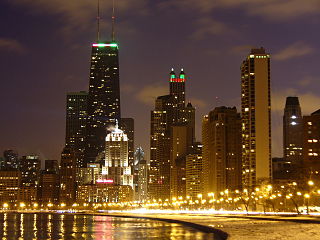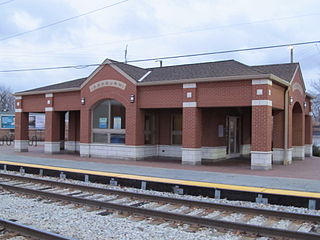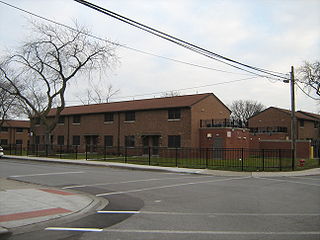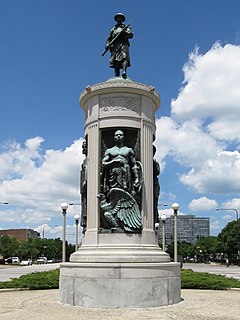| Type | Monthly newspaper, community journalism |
|---|---|
| Format | Tabloid |
| Owner(s) | Mark J. Valentino |
| Publisher | Mark J. Valentino |
| Associate editor | William S. Bike |
| Photo editor | Christopher Valentino |
| Staff writers | Andrew Adams, Patrick Butler, Gina Catalano, Claire Cowley, Nawal Dairi, Dolly Duplantier, Jake Ekdahl, Sheila Elliot, Susan Fong, Rodrigo Hernandez, Eva Hofmann, Lisa R. Jenkins, Kayla Kirshenbaum, Jane Lawicki, Madeline Makoul, Joseland Nixon, Mara Perlow, Rick Romano, Amy Rothblatt, Ivette Sandoval, Jennifer Santoyo, Susan S. Stevens, Igor Stuenkov, Gabriella Valentino, Monica Walk, Marie Balice Ward, David Warren, Peter Winslow, Nathan Worcester |
| Founded | 1983 |
| Headquarters | 1335 W. Harrison St, Chicago, IL 60607 |
| Circulation | 17,000 |
| Website | http://www.gazettechicago.com/ |
Gazette Chicago (formerly the Near West Gazette and then Near West/ South Gazette) is a monthly newspaper covering the Near West/Tri-Taylor, University Village, West Loop, South Loop, West Haven, Bridgeport/Armour Square, Chinatown, Bronzeville, West Town, and Heart of Chicago communities of Chicago, Illinois, USA. Its circulation is 17,000.
In 1983, native Chicago Near West Sider Mark J. Valentino at age 24 started the Near West Gazette with no financial backing other than his own small savings. The Near West Side neighborhood had had no community publication since 1971. Editor and Publisher Valentino added business partner and Associate Editor William S. Bike to the publication, and Gazette Chicago was underway.
Gazette Chicago is one of the few independently owned publications in Chicago and is a vehicle that brings the diverse neighborhoods it covers together, despite their close proximity. These are communities of African-Americans, Hispanic-Americans, Chinese-Americans, Irish-Americans, Italian-Americans, Croatian-Americans, Polish-Americans, Lithuanian-Americans, and well-to-do professionals and gentrifiers who would have few bridges to each other without the Gazette, which covers all their news. In recognition of this, Valentino in 1997 received the Bernadine C. Washington Award conferred by the Chicago Commission on Human Relations for Gazette Chicago's work in improving human relations in Chicago and building bridges among communities. The Chicago City Council that year also passed a resolution honoring Gazette Chicago for building bridges among communities.
Unlike many other media, Gazette Chicago covers every candidate in local races, whether they are considered "legitimate" or not by the citywide media. As a result, underfunded candidates, particularly African-American and Hispanic candidates, get as much and as balanced coverage as wealthier candidates.
Gazette Chicago since 1993 has won more than 70 local, national, and even international journalism awards.
Gazette Chicago is located in Chicago, IL, (312) 243-4288, www.gazettechicago.com, info@gazettechicago.com.

Chicago, officially the City of Chicago, is the most populous city in the U.S. state of Illinois, and the third-most-populous city in the United States. With an estimated population of 2,693,976 in 2019, it is also the most populous city in the Midwestern United States. Chicago is the county seat of Cook County, the second-most-populous county in the US, with a small portion of the northwest side of the city extending into DuPage County near O'Hare Airport. Chicago is the principal city of the Chicago metropolitan area, often referred to as Chicagoland. At nearly 10 million people, the metropolitan area is the third most populous in the United States.

The Loop, one of Chicago's 77 designated community areas, is the central business district of the city and is the main section of Downtown Chicago. Home to Chicago's commercial core, it is the second largest commercial business district in North America and contains the headquarters and regional offices of several global and national businesses, retail establishments, restaurants, hotels, and theaters, as well as many of Chicago's most famous attractions. It is home to Chicago's City Hall, the seat of Cook County, and numerous offices of other levels of government and consulates of foreign nations. In it at the intersection of State Street and Madison Street is the origin of Chicago's street grid addresses, established in 1909. Most of Grant Park's 319 acres (1.29 km²) are in the eastern section of the community area. The Loop community area is bounded on the north and west by the Chicago River, on the east by Lake Michigan, and on the south by Roosevelt Road, although the commercial core has greatly expanded into adjacent community areas.

Pullman, one of Chicago's 77 defined community areas, is a neighborhood located on the city's South Side. Twelve miles from the Chicago Loop, Pullman is situated adjacent to Lake Calumet.

Edgewater is a lakefront community area on the North Side of the city of Chicago, Illinois six miles north of the Loop. As one of the city’s 77 official community areas, Edgewater is bounded by Foster Avenue on the south, Devon Avenue on the north, Ravenswood Avenue on the west, and Lake Michigan on the east. Edgewater contains several beaches that residents enjoy during the late spring, summer, and early autumn. Chicago's largest park, Lincoln Park, stretches south from Edgewater for seven miles along the waterfront, almost to downtown. Historically, Edgewater was the northeastern corner of Lake View Township, an independent suburb annexed by the city of Chicago in 1889. Today, the Uptown community is to Edgewater's south, Lincoln Square to its west, West Ridge to its northwest and Rogers Park to its north.

The Near North Side is the eighth of Chicago's 77 community areas. It is the northernmost of the three areas that constitute central Chicago, the others being the Loop and the Near South Side. The community area is located north and east of the Chicago River. To its east is Lake Michigan, and its northern boundary is the early 19th-century city limit of Chicago, North Avenue. Of the downtown community areas, the Near North Side has the second-largest total area after the Near West Side, the highest number of skyscrapers, and the largest population. With the exception of Goose Island and the remnants of Cabrini–Green, to the west, the Near North Side is known for its extreme affluence, typified by the Magnificent Mile, Gold Coast, Navy Pier, and its world-famous skyscrapers.

Austin is one of seventy-seven officially designated community areas in Chicago, Illinois. Located on the city's West Side, it is the second largest community area by population and the second-largest geographically. Austin's eastern boundary is the Belt Railway located just east of Cicero Avenue. Its northernmost border is the Milwaukee District / West Line. Its southernmost border is at Roosevelt Road from the Belt Railway west to Austin Boulevard. The northernmost portion, north of North Avenue, extends west to Harlem Avenue, abutting Elmwood Park. In addition to Elmwood Park, Austin also borders the suburbs of Cicero and Oak Park.

Hermosa is one of 77 designated Chicago community areas and is located on the northwest side of Chicago, Illinois. The Hermosa community area contains the Kelvyn Park and Hermosa neighborhoods. The area includes the birthplace of Walt Disney and is the former headquarters of the Schwinn Bicycle Company. While being one of the smaller community areas Hermosa is one of the city's most densely populated neighborhoods.

Ashburn, one of Chicago's 77 community areas, is located on the south side of the city. Greater Ashburn covers nearly five square miles. The approximate boundaries of Ashburn are 72nd Street (north), Western Avenue (east), 87th Street (south) and Cicero Avenue (west).

The Near South Side is a community area of Chicago, Illinois, United States, just south of the downtown central business district, the Loop. The Near South Side's boundaries are as follows: North—Roosevelt Road ; South—26th Street; West—Chicago River between Roosevelt and 18th Street, Clark Street between 18th Street and Cermak Road, Federal between Cermak Road and the Stevenson Expressway just south of 25th Street, and Clark Street again between the Stevenson and 26th Street; and East—Lake Michigan.

The Near West Side, one of the 77 community areas of Chicago, is on the West Side, west of the Chicago River and adjacent to the Loop. The Great Chicago Fire of 1871 started on the Near West Side. Waves of immigration shaped the history of the Near West Side of Chicago, including the founding of Hull House, a prominent settlement house. In the 19th century railroads became prominent features. In the mid-20th century, the area saw the development of freeways centered in the Jane Byrne Interchange.

West Town, located in Chicago, in the U.S. state of Illinois, northwest of the Loop, on Chicago's West Side is one of 77 officially designated Chicago community areas. Much of this area was historically part of the city's Polish Downtown, and its name may refer to Western Avenue, which was the city's western boundary at the time of West Town's settlement, but more likely was a convenient abstraction by the creators of Chicago's community areas. Then, as now, West Town was a collection of several distinct neighborhoods. It was the most populous of the community areas from their creation until it was surpassed by Near West Side in the 1960s. The boundaries of the community area are the Chicago River to the east, the Union Pacific railroad tracks to the south, the former railroad tracks on Bloomingdale Avenue to the North, and an irregular western border to the west that includes the city park called Humboldt Park. Humboldt Park is also the name of the community area to West Town's west, Logan Square is to the north, Near North Side to the east, and Near West Side to the south. Currently, as well as historically, the collection of neighborhoods in West Town along with the neighborhoods of Bucktown and the eastern portion of Logan Square have been referred to by media as the Near Northwest Side.

Riverdale is one of the 77 official community areas of Chicago, Illinois and is located on the city's far south side.

The Houston City Council is a city council for the city of Houston in the U.S. state of Texas.

The Grant is the companion structure to One Museum Park in the Near South Side community area (neighborhood) in Chicago, Illinois, USA. It is located at the north end of the Central Station development.

The South Side is an area of Chicago. It is the largest of the three Sides of the city that radiate from downtown—the others being the North Side and the West Side.

Rush Street is a one-way street in the Near North Side community area of Chicago in Cook County, Illinois, United States. The street, which starts at the Chicago River between Wabash and North Michigan Avenues, runs directly north until it slants on a diagonal as it crosses Chicago Avenue then it continues to Cedar and State Streets, making it slightly less than a mile long. One lane also runs southbound from Ohio Street (600N) to Kinzie Street (400N) as part of a two-way street segment. It runs parallel to and one block west of the Magnificent Mile on the two-way traffic North Michigan Avenue, which runs at 100 east up to 950 north. The street, which is also one block east of the one-way southbound Wabash Avenue, formerly ran slightly further south to the Chicago River where over time various bridges connected it to the Loop, Chicago's central business district.
The Chicago 21 Plan was a comprehensive development plan released in 1973 intended to revitalize the areas surrounding the Chicago Loop, Chicago's central business district. The 125-page document, subtitled "A Plan for the Central Area Communities" was published by the Chicago 21 Corporation, which was made up of members of the Chicago Central Area Committee (CCAC), founded by some of Chicago's most influential business and civic leaders.
José Cha Cha Jiménez is the founder of the Young Lords, a national human rights movement. It was founded in the Lincoln Park neighborhood of Chicago on September 23, 1968. Jiménez was born in Caguas, Puerto Rico, to jíbaro parents, Eugenia Rodríguez Flores of San Lorenzo and Antonio Jiménez Rodríguez from San Salvador bario in Caguas.
Richard Paul Taub is an American sociologist noted for his research on urban, rural, and community economic development. He is a faculty member of the University of Chicago's Department of Sociology and Department of Comparative Human Development and is also the Paul Klapper Professor in the Social Sciences. Taub has served as a consultant for many social enterprises, research institutions and community development organizations such as the Neighborhood Preservation Initiative, the National Community Development Initiative, and the National Opinion Research Center. He advised the South Shore Bank and the Shorebank Corporation from 1973-2007. His professional and academic concentrations include entrepreneurship, microloan programs, economic development, poverty, social change, the sociology of India, public policy initiatives, the evaluation of social programs, and the role of honor in generating behavioral outcomes. Taub is the recipient of numerous academic awards, research grants and fellowships such as the University of Chicago Prize for Excellence in Graduate Teaching (2004), as a Distinguished Visitor at the John D. and Catherine T. MacArthur Foundation, and as a Resident Fellow at the W.E.B. Du Bois Institute for Afro-American Research at Harvard University (1997–98).
Wednesday Journal, Inc. is a newspaper publisher based in Oak Park, Illinois. It publishes a free weekly community newspaper in Chicago's Austin neighborhood, paid weekly newspapers in the city's western suburbs and parenting magazines in the Chicago metropolitan area.